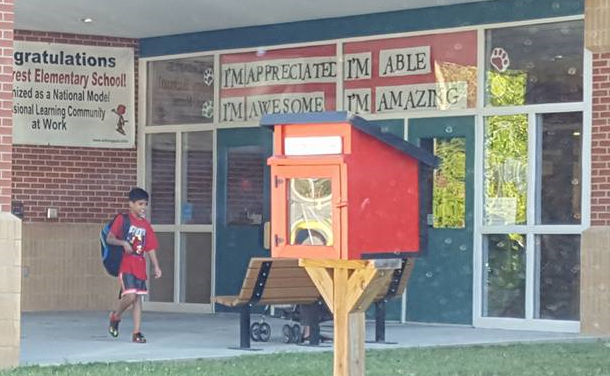"I'm Appreciated, I'm Able, I'm Awesome, I'm Amazing"
Geneva Dixon says in a Huffington Post article that one of the eight things we must do in the US to save public school education is to "Stop talking about saving the planet and live it". It does make sense that for one to be aware of nature or the environment, one must spend more time outdoors. There is really a limit to what one could learn on pen and paper. Ironically, schools tend to overestimate what reading and writing can really accomplish. Even in developing one's self-image, students are sometimes provided writing exercises that are supposed to spark an examination of one's values. And indeed, there are claims that these exercises can even help a student combat stereotyping oneself into one of those types deemed to underperform in schools.
A student whose race, socio-economic status, or disability falls into one of these academically challenged stereotypes does risk developing a self-image that is self-fulfilling. Each day is a challenge for these students. Will they be accepted or sentenced to a life of failure?
At the elementary school my son attends, banners are posted above the main doors. The banners say, "I'm Appreciated, I'm Able, I'm Awesome, I'm Amazing".
Why these signs are posted mean only one thing. It is a reminder to all of us that each child needs to be valued. It symbolizes this particular school's effort to emphasize a growth mindset among everyone. As research shows, helping students develop a healthy self-image goes far beyond just academic exercises.
A paper published in the Journal of Educational Psychology, "New Evidence on Self-Affirmation Effects and Theorized Sources of Heterogeneity from Large-scale Replications", shows that interventions such as writing exercises do not really help. In contrast to previous studies, the effects seen in a better designed experiment are seen to be insignificant:
This should not be surprising. If a child's understanding and awareness of climate change, pollution, biodiversity, overpopulation, and other environment concerns cannot really be distilled in reading and writing exercises, why should one expect that a child's poor self-image can be corrected by purely academic activities. Our sense of self is a product of so many encounters with other people. How a child views oneself is shaped by the treatment he or she receives from peers, teachers and parents. The banners "I'm Appreciated, I'm Able, I'm Awesome, I'm Amazing" are posted above those doors to remind all of us that the school is one place where we help children construct images of themselves. And we do this by how we treat them, less so by what we ask them to read or write.
A student whose race, socio-economic status, or disability falls into one of these academically challenged stereotypes does risk developing a self-image that is self-fulfilling. Each day is a challenge for these students. Will they be accepted or sentenced to a life of failure?
At the elementary school my son attends, banners are posted above the main doors. The banners say, "I'm Appreciated, I'm Able, I'm Awesome, I'm Amazing".
Why these signs are posted mean only one thing. It is a reminder to all of us that each child needs to be valued. It symbolizes this particular school's effort to emphasize a growth mindset among everyone. As research shows, helping students develop a healthy self-image goes far beyond just academic exercises.
A paper published in the Journal of Educational Psychology, "New Evidence on Self-Affirmation Effects and Theorized Sources of Heterogeneity from Large-scale Replications", shows that interventions such as writing exercises do not really help. In contrast to previous studies, the effects seen in a better designed experiment are seen to be insignificant:
 |
| Above copied from New Evidence on Self-Affirmation Effects and Theorized Sources of Heterogeneity From Large-Scale Replications. Hanselman, Paul; Rozek, Christopher S.; Grigg, Jeffrey; Borman, Geoffrey D. Journal of Educational Psychology, Aug 8 , 2016, No Pagination Specified. http://dx.doi.org/10.1037/edu0000141 |
This should not be surprising. If a child's understanding and awareness of climate change, pollution, biodiversity, overpopulation, and other environment concerns cannot really be distilled in reading and writing exercises, why should one expect that a child's poor self-image can be corrected by purely academic activities. Our sense of self is a product of so many encounters with other people. How a child views oneself is shaped by the treatment he or she receives from peers, teachers and parents. The banners "I'm Appreciated, I'm Able, I'm Awesome, I'm Amazing" are posted above those doors to remind all of us that the school is one place where we help children construct images of themselves. And we do this by how we treat them, less so by what we ask them to read or write.


Comments
Post a Comment